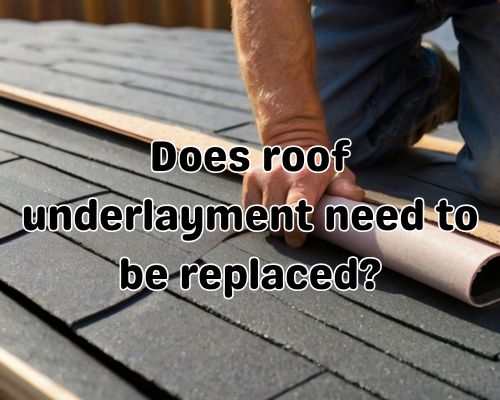Wall panelling has long been admired for its aesthetic charm, evoking classic elegance or modern flair depending on the material and finish. But beyond style, many homeowners in Mornington, Australia, are beginning to ask a more practical question: Does wall panelling actually make a room warmer?

With energy prices rising and the Mornington Peninsula climate swinging between seaside chills and sun-drenched afternoons, the idea of using interior features like panelling for better thermal insulation is gaining momentum. Let’s explore whether wall panelling is merely decorative—or a silent partner in your home’s energy efficiency strategy.
Understanding Wall Panelling: More Than a Pretty Face
Wall panelling, also known as wainscoting or cladding in some contexts, refers to decorative or functional panels applied to interior walls. Materials vary, including:
- Timber (pine, oak, cedar)
- MDF (Medium Density Fibreboard)
- PVC (Polyvinyl Chloride)
- Gypsum and composite materials
Each material has distinct properties, but all can contribute—directly or indirectly—to a room’s warmth.
Thermal Properties of Wall Panelling
Wall panelling alone isn’t technically an insulator in the way that fibreglass batts or foam boards are. However, certain materials—especially timber wall panels—can add a buffer layer between your indoor space and colder external walls. This layer can help reduce heat transfer and stabilize room temperature.
In Mornington’s coastal climate, where cool breezes can chill interior walls, even a few degrees’ difference in perceived temperature can impact comfort—and utility bills.
How Wall Panelling Affects Room Warmth
Let’s unpack the thermal benefits and their relevance to Mornington households:
1. Thermal Mass Effect
Materials like wood have a moderate thermal mass. This means they absorb heat during the day and release it gradually at night. In homes with good solar passive design, this can reduce the load on your heating systems.
2. Air Gap Layering
Panelling creates a micro air gap between the panel and the wall surface. Air is a poor conductor of heat, so this small cavity acts as a thermal buffer, slightly reducing heat loss—particularly relevant for older homes in Mount Martha, Mornington East, or Tuerong, where solid brick construction dominates.
3. Reduction of Cold Surface Exposure
Bare walls—especially plasterboard or painted cement—can feel cold to the touch. Panelled surfaces are often warmer, not just in sensation but in their ability to reflect ambient warmth back into the room. This is crucial for south-facing rooms, where Mornington homes may struggle with natural light and warmth in winter.
Visit website for more.
Mornington Climate Considerations
Mornington enjoys a temperate oceanic climate, with average winter lows dipping below 10°C. Many homes rely on reverse-cycle split systems or ducted heating—both of which perform more efficiently in spaces that retain heat.
In homes without wall insulation (common in pre-1980s construction across the peninsula), installing panelling can offer an immediate aesthetic and thermal upgrade, especially when combined with insulative underlays or thermal backings.
Best Wall Panelling Options for Thermal Performance
Not all panelling is created equal. If warmth is a priority, consider these materials:
✅ Solid Timber Panelling
Natural wood is a poor conductor, making it a decent passive barrier against heat transfer. Choose sustainably sourced options, such as Tasmanian oak, for a warm finish that suits coastal interiors.
✅ MDF with Insulative Backing
MDF is more affordable and easy to install, especially for DIY renovators in Mornington South. When paired with foil or foam insulation behind the boards, it significantly enhances wall performance.
✅ Composite Thermal Panels
Advanced engineered panels integrate rigid foam cores, combining style with high R-value ratings. While pricier, they’re ideal for new builds or extensive renovations in Mornington Peninsula suburbs like Baxter or Mount Eliza.
Bonus Thermal Boosters: Combining Panelling with Other Upgrades
While panelling adds a layer of warmth, combining it with other improvements maximizes comfort and efficiency:
- Wall insulation retrofitting behind panelling
- Draught-proofing around doors and windows
- Heavy curtains or thermal blinds
- Floor insulation for suspended timber floors common in beachside homes
By layering solutions, Mornington residents can make their homes cosier while trimming down those AusNet or Jemena gas bills.
Style Meets Function: Coastal Elegance with Comfort
Wall panelling also aligns with the coastal aesthetic popular in Mornington—think Hamptons-style interiors, board-and-batten walls, or VJ (vertical joint) panelling. These styles not only exude charm but feel tangibly warmer underfoot and to the eye—adding perceived warmth that complements physical warmth.
Whether you’re refurbishing a Federation-style cottage on Barkly Street or modernizing a beachfront home in Dromana, the right panelling adds both personality and performance.
Is Wall Panelling Right for Every Room?
Not all spaces will benefit equally. Here’s a quick guide:
| Room | Suitability | Why? |
|---|---|---|
| Living Room | ✅ High | Often the largest space, it benefits from retained heat |
| Bedrooms | ✅ Medium-High | Enhances nighttime comfort |
| Bathrooms | ⚠️ Moderate | Requires moisture-resistant panels (e.g., PVC) |
| Kitchens | ✅ Medium | Warmer feel, though airflow may reduce thermal gain |
Local Installers & Where to Buy in Mornington
If you’re considering installation, these local providers can help:
- Mornington Timber & Decking – Supplies high-quality timber panelling options.
- Coastal Living Renovations (Mornington) – Specialists in Hamptons-style interiors and wall panelling installations.
- Bunnings Mornington – Carries a variety of DIY-friendly MDF and composite wall panels.
Be sure to discuss your insulation goals with a professional installer, see https://morningtoncabinetmakers.com.au/, to select the best combination of material, style, and backing.
Final Verdict: Does Wall Panelling Make a Room Warmer?
Yes—when chosen and installed strategically, wall panelling can make a room feel and perform warmer. While it’s not a replacement for dedicated insulation, it serves as an effective complementary layer—especially in climate zones like Mornington’s, where wind, ocean air, and older building stock can challenge indoor comfort.
For homeowners balancing form and function, panelling delivers a smart, stylish solution that enhances both thermal comfort and property value.
Call to Action: Ready to Warm Up Your Home?
If you’re considering wall panelling for your Mornington property, now’s the perfect time to explore your options. Whether you’re looking to improve thermal comfort, elevate interior design, or reduce energy use, wall panelling is a versatile upgrade worth investigating.
🔧 Contact a local renovation expert today or swing by your nearest hardware store to browse panels in person.
📍 Mornington homeowners: comfort is more than a luxury—it’s a climate-smart decision.












